
[dropcap]As[/dropcap] far as I know, artichokes aren’t a traditional Lao veg/ingredient – and so, I’ve never seen them used in Lao cuisine before. Though, after saying that and knowing how karma works with me, there’s probably a small/barely known, enigmatic hill-tribe on the borders of Laos who grows and eats artichokes like they’re connected to it in some mysterious/spiritual way – who creates a wonderful collection of delicious artichoke dishes that will impress and surprise the most discerning gastronome/food critic, and whose village totem is the artichoke!
If that’s the case, then that’s awesome, and I would love to meet this hill-tribe and eat/experience their artichoke lifestyle/cuisine one day. But the odds are it’s not the case, and the closest that I can get to this fantasy/artichoke hill-tribe scenario is actually me/myself/I in my home in Sydney, Australia. And that’s just fine with me also because I love to experiment/play with food, new ingredients and recipes!

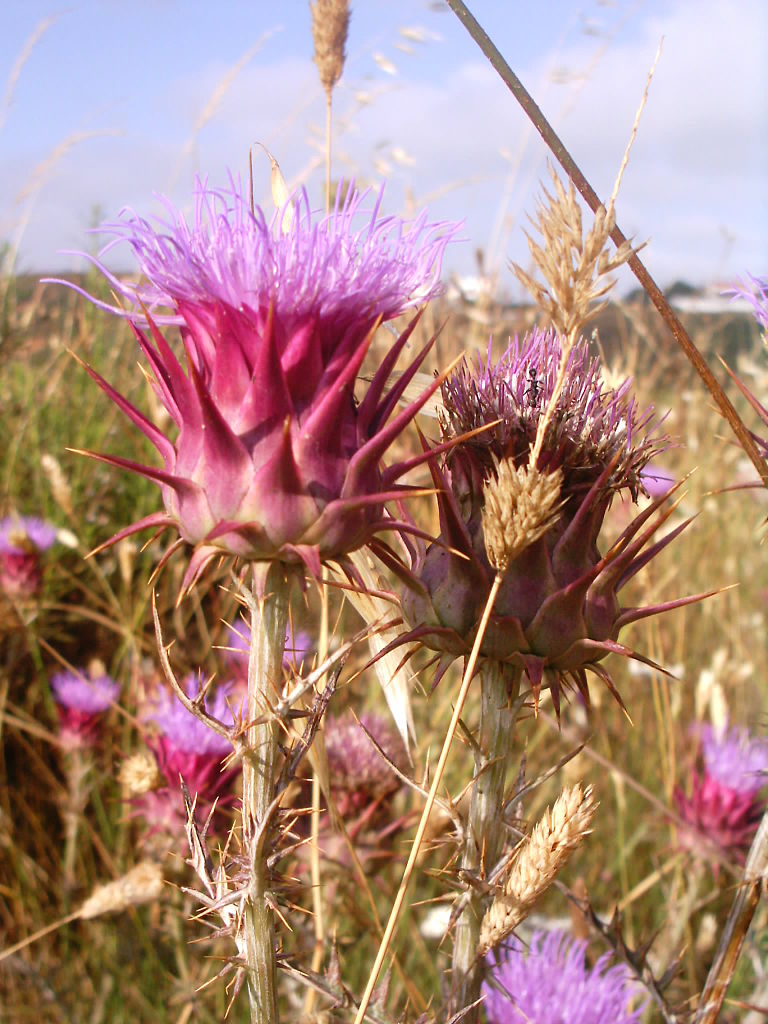
First, let’s talk about artichokes. I’ve never cooked artichokes before and my only experience with them so far has been buying and eating the pickled/preserved varieties that are sold in jars or at the deli.
I’m not certain what attracts me to them so much. Is it the name (it has the word art/arty in it, lol – I know, the way they look (only mother nature can combine such an awesome colour palate of green/purple/yellow so flawlessly – [sighs…]), or how they taste (a fleshy/meaty yet delicate/tender veg of mild/subtle/sweet flavours)?
I think it’s all of the above. And who would have thought that such a beautifully peculiar looking plant that can sometimes look quite fierce (esp. their thistle like wild cousin – cardoon) can be such a delectable meat alternative and also be distilled to make an aperitif – Cynar?((3)) The power of passionate taste buds, hey?
Fresh artichokes are handsome looking plants and they’re often prized at the markets. They exude vital/vibrant foliage/appearance that beckon and inspire passing foodies to cook them up and savour their deliciousness. Texture and flavour wise, pickled/preserved artichoke hearts remind me a lot of tender bamboo shoots – meaty yet tender and with a sweet/mellow flavour. It is this quality that inspired me to try my hand at cooking/prepping fresh artichokes to make a classic Lao dish – the famous/ubiquitous and delicious jeow!
Jeow (pronounced similar to jell/gel but with a lingering ow sound at the end – lol!) is a broad term that covers a spectrum of important/essential Lao dishes that usually/customarily accompany most Lao meals. Jeow includes a selection of dipping sauces, relishes and pastes. It can be wet/liquid based, dry or semi. It can be thin, thick or chunky, vegetarian or non-veg (fish, meat, insect, etc), although fish sauce and padaek are often essential ingredients (but you can omit/substitute these if you like).
And more often than not, jeow are typically spicy, intensely flavoured, deliciously addictive and always, always, always pair perfectly with a big handful of steaming hot sticky rice! YUMM!!((4))
Famous Lao jeow dishes include jeow bong (a fabulously sweet and spicy chili paste/dipping sauce [usually with thin slivers of pork/buffalo skin mixed in] from Luang Prabang), jeow mark len (spicy tomato relish) and jeow mark keua (spicy eggplant relish). Although, from my point of view – jeow can be made from any/most types of veg/ingredients that you like/have available – from enoki mushroom (jeow het) to asparagus spears, zucchini flowers to artichoke hearts (jeow artichoke)!
In the following jeow artichoke recipe (and like most jeow recipes), the secret/tip is to char-grill the ingredients first. The heat softens the veg and intensifies the natural flavours/sweetness of the ingredients and the ebony charred pieces give/add a lovely smokey/earthy/rustic flavour/character to the jeow/relish/dip.
I’ve made many jeows before but this was the first time I’ve made one with fresh artichokes. Luckily, and as I had hopefully expected, it turned out delicious! The flavour of the artichoke is very subtle/mild, so be careful to not add too many other ingredients into the mix nor over flavour the jeow when mixing, otherwise the flavour of the artichoke might get overpowered/lost. Also, when slicing the grilled artichoke – do slice them thinly but remember to keep some texture/shape to them so that they show/shine in the finished dish.
Jeow are one of my favourite Lao dishes. It’s essentially a dipping sauce/relish and makes a wonderful accompaniment to any Lao meal. It can even be the feature of a meal, especially when complemented with sticky rice and steamed greens, etc. There’s many more Lao jeow recipes that I want to share with you, but here’s an intro. I hope you’ll give it a try, and if you do, please let me know what you think of it. It’s pretty easy to make and really tastes quite amazing!! Sern saab everyone!
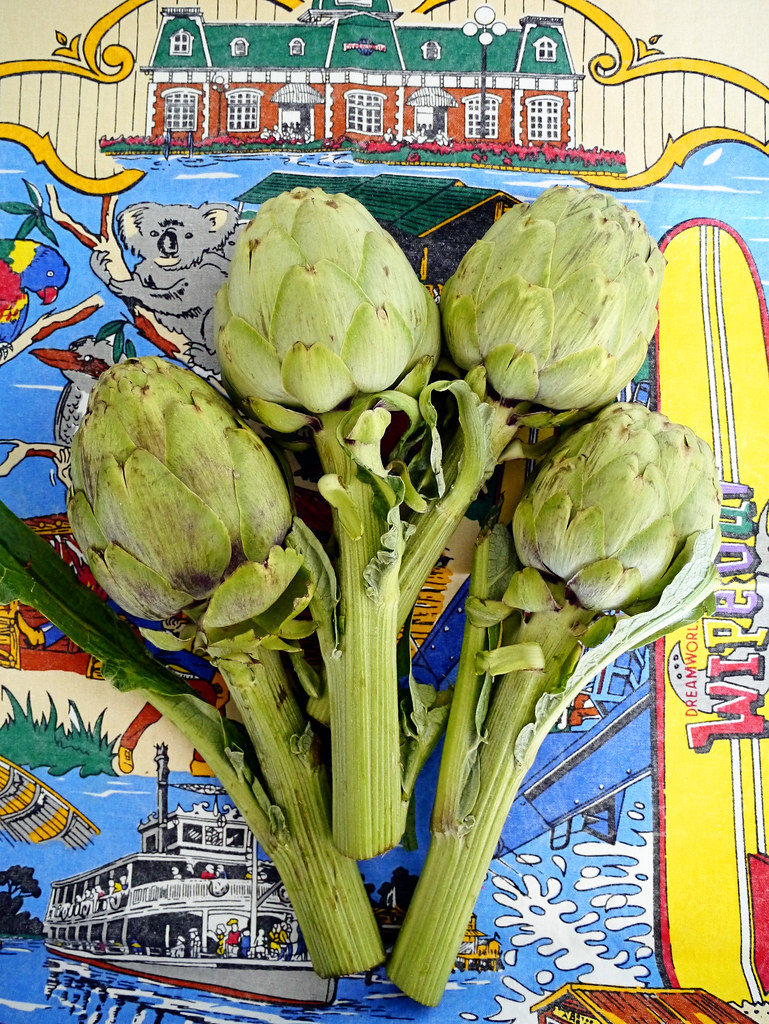
First, prepare the artichokes.
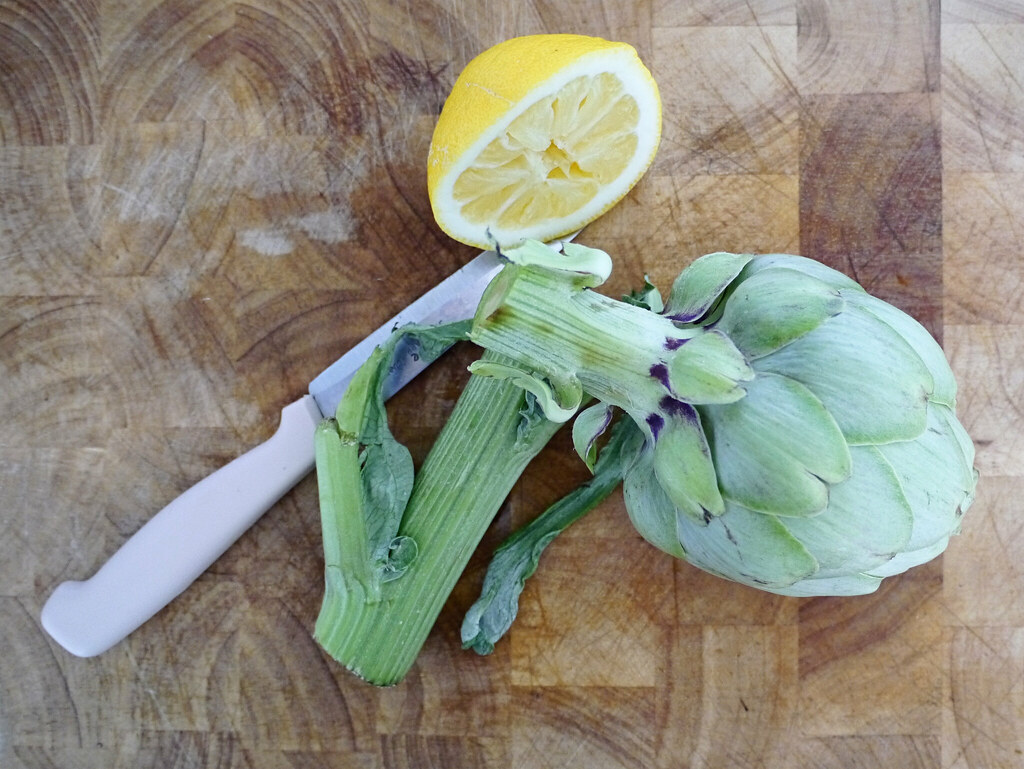
Cut the stem off the artichoke head so that you are left with about 5-10 cm of the stem still attached to the head. Rub the base of the stem with a lemon half to prevent it from turning brown.
Note: This is the first time I’ve prepared/cooked with fresh artichokes, and I followed the process/steps of preparing/cleaning the artichokes as provided by DeLallo and Veggie Belly. Thanks both very much for the tutorials! bigsmile Both sites advised using lemon juice and a bowl of lemon juice/water mix to help prevent the prepared artichoke from turning brown. My artichoke ended up turning brown/khaki/green/yellow after grilling anyway, so this process might not be necessary?
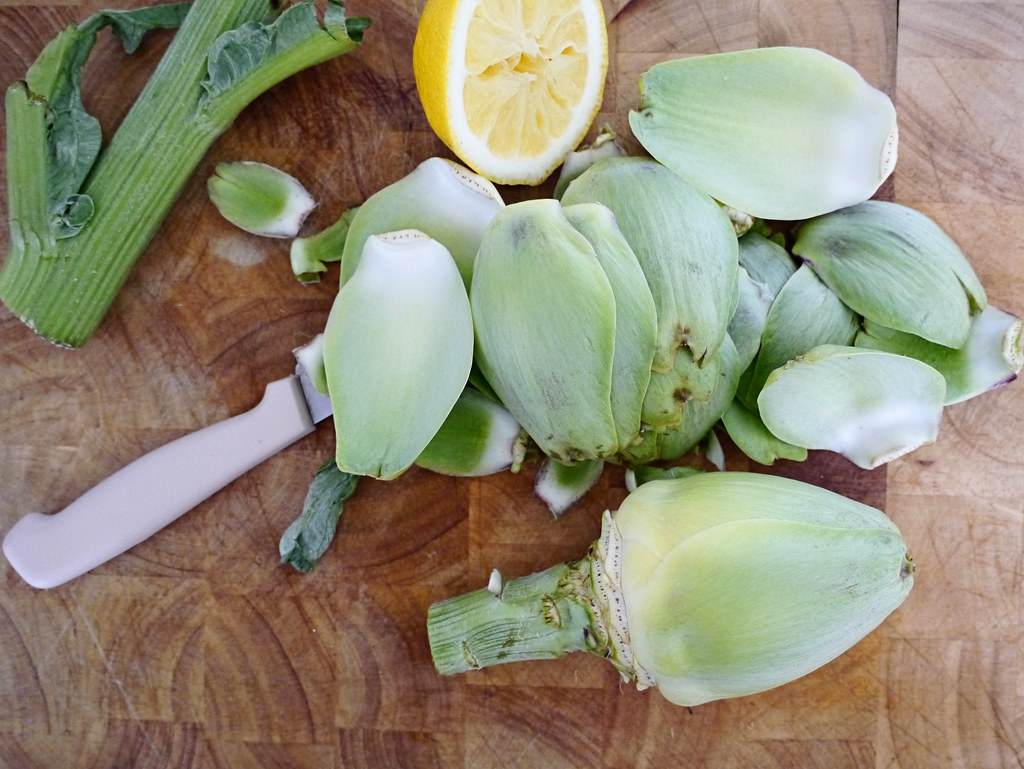
Pull/peel off the leaves from the stem and the dark green outer bracts from the head until you reach the light green/light yellow bracts which are also more tender.
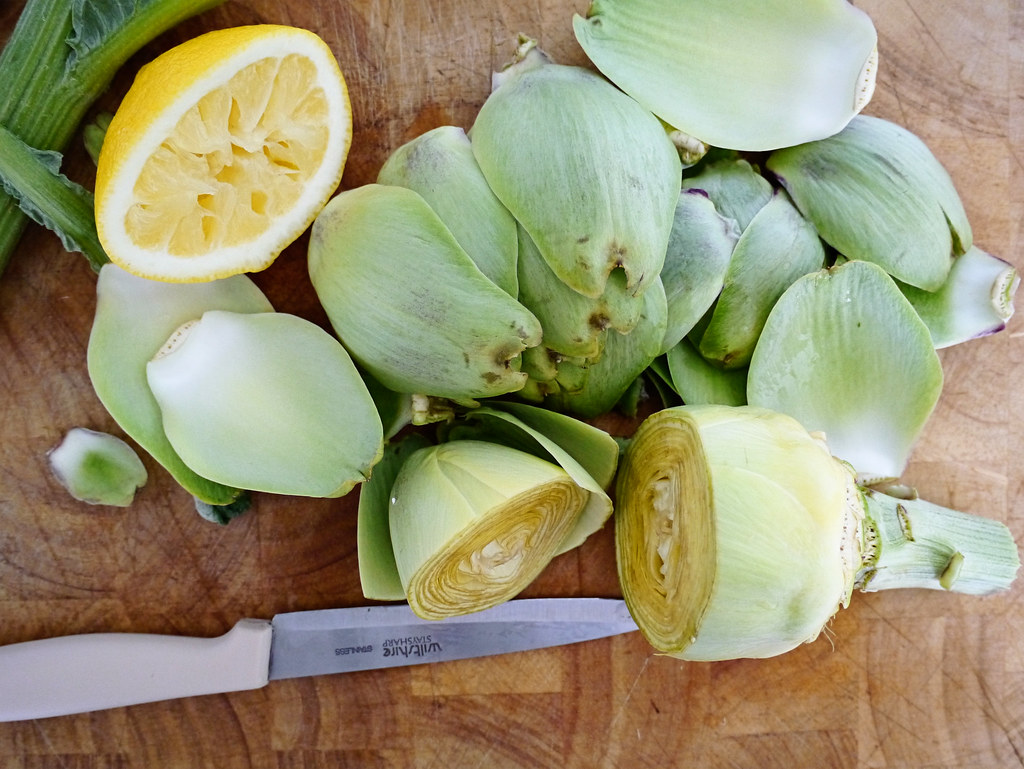
With a sharp knife, carefully cut off about 1/3 of the tip of the artichoke head. Be careful because the outer leaves can be tough and slippery! Rub the top of the cut head with the lemon half to prevent browning.
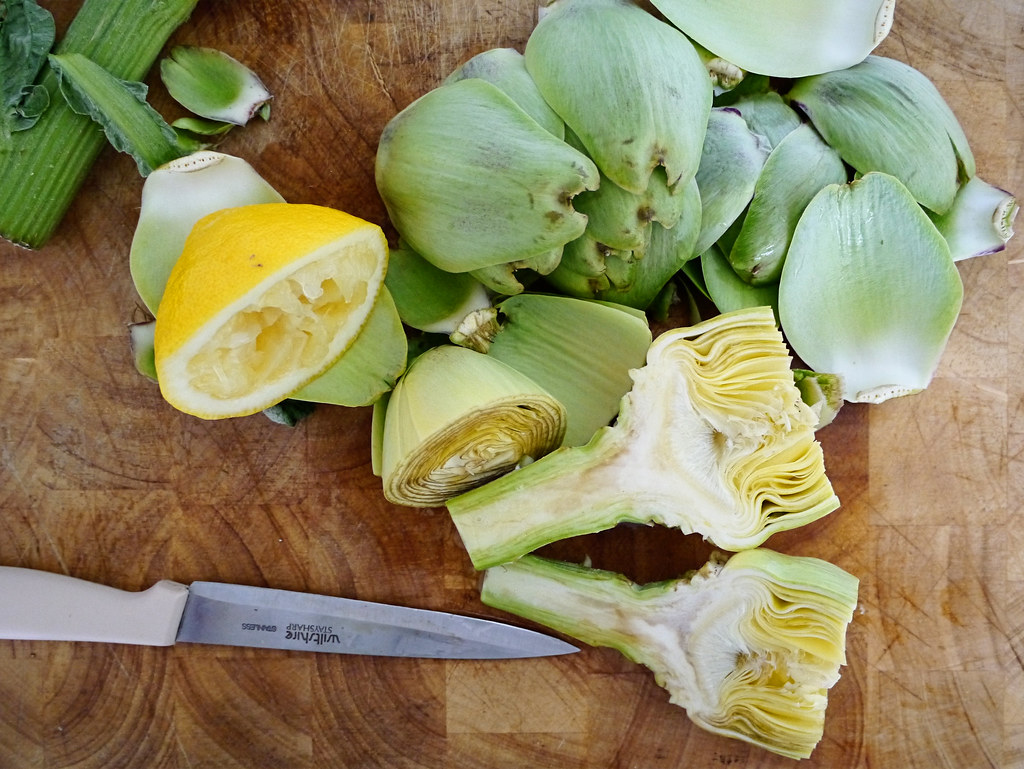
Carefully cut the artichoke in half vertically. Again, rub the cut/exposed part with the lemon half to prevent browning.
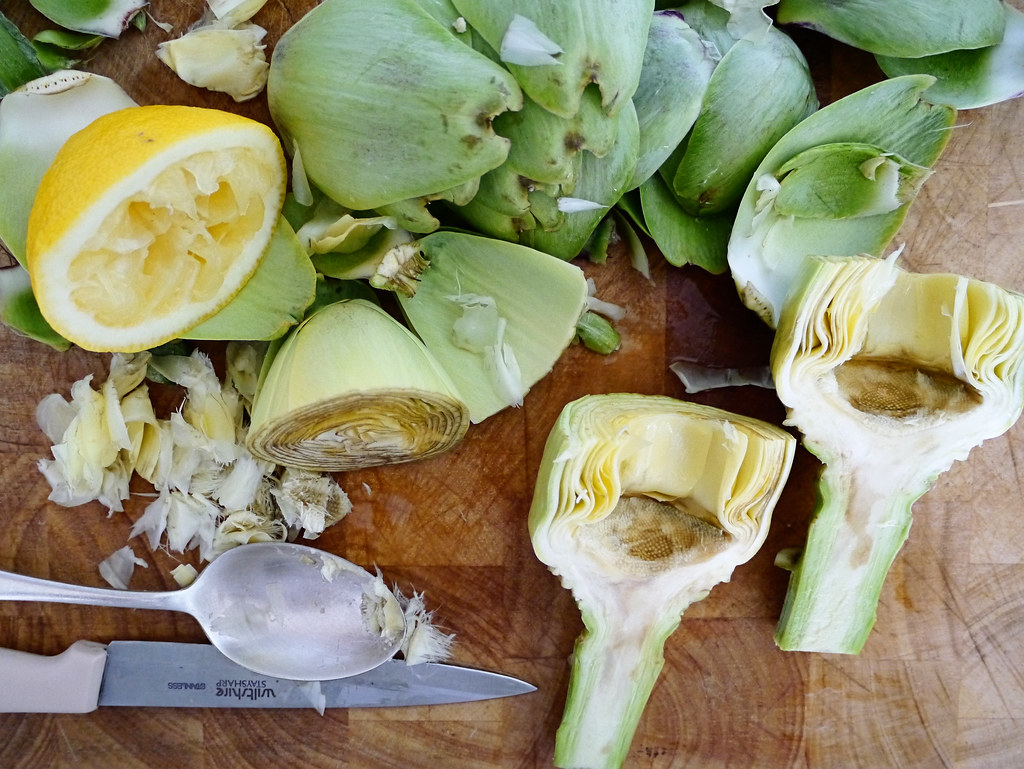
With a spoon, carefully scoop out the fuzzy/hairy choke from the center of the artichoke.

Peel the outer skin off the stem and base of the artichoke head.
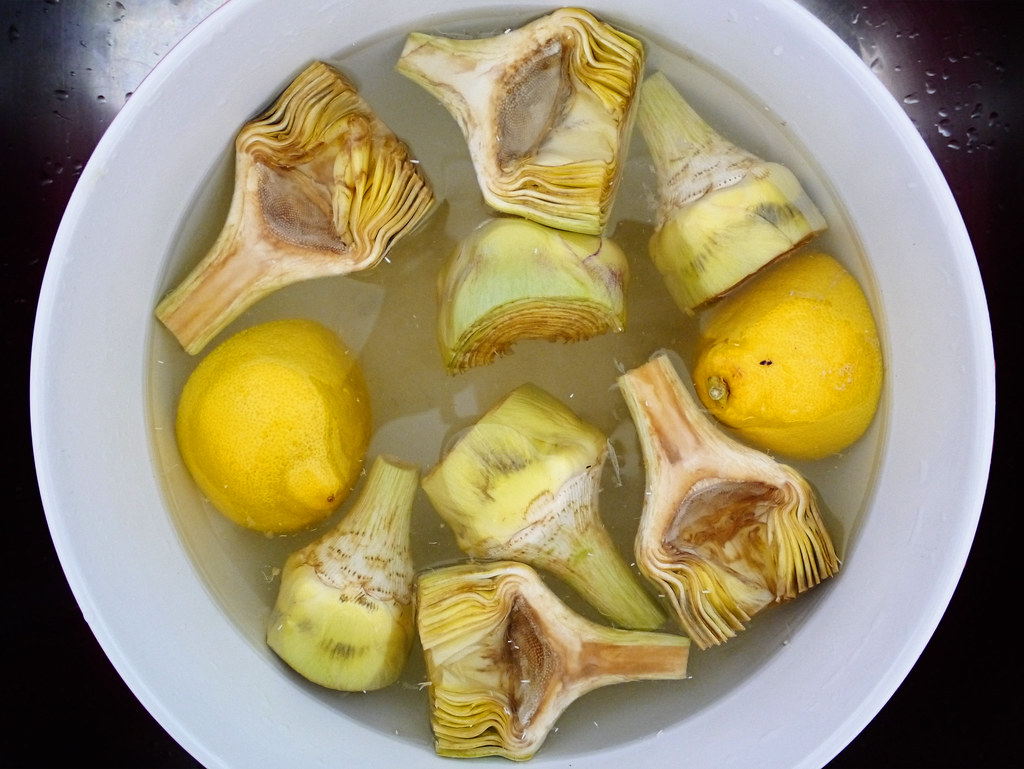
Place the prepared artichoke halves in a bowl of cold water with juice from 1 lemon while you prepare the remaining artichokes.

Grill the spring onions (cut off roots and then cut into thirds), Asian/French shallots (halved), garlic cloves, chilies, coriander roots (reserve the leaves) and artichoke halves until they’re soft and slightly charred.

Thinly slice them.
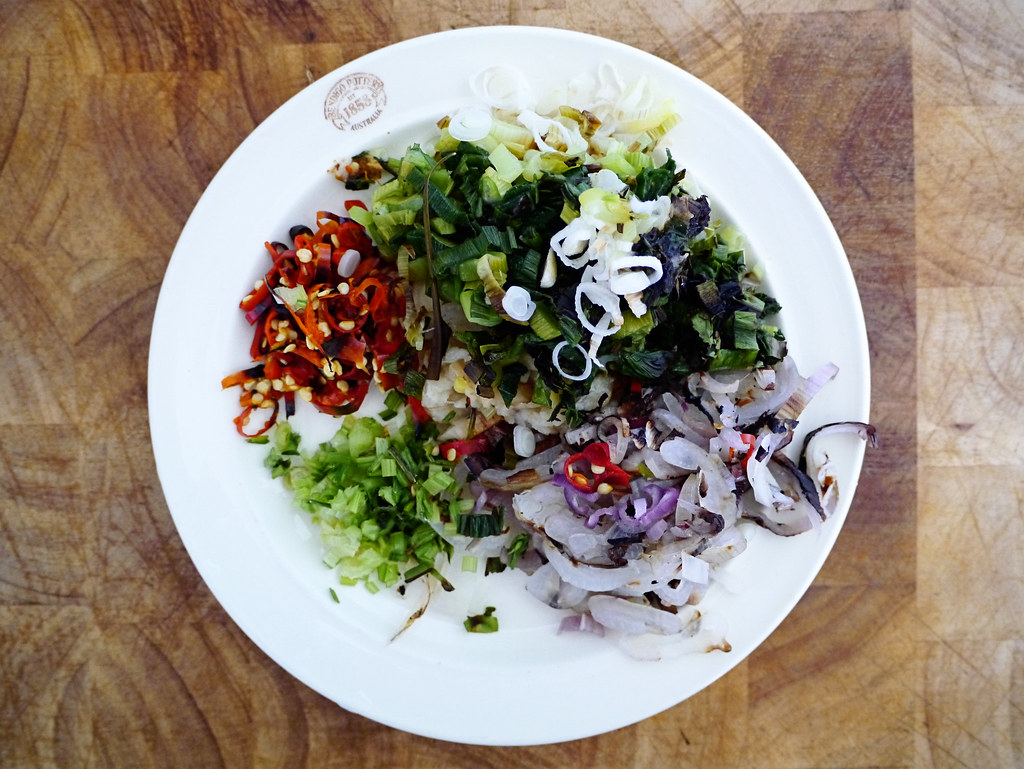
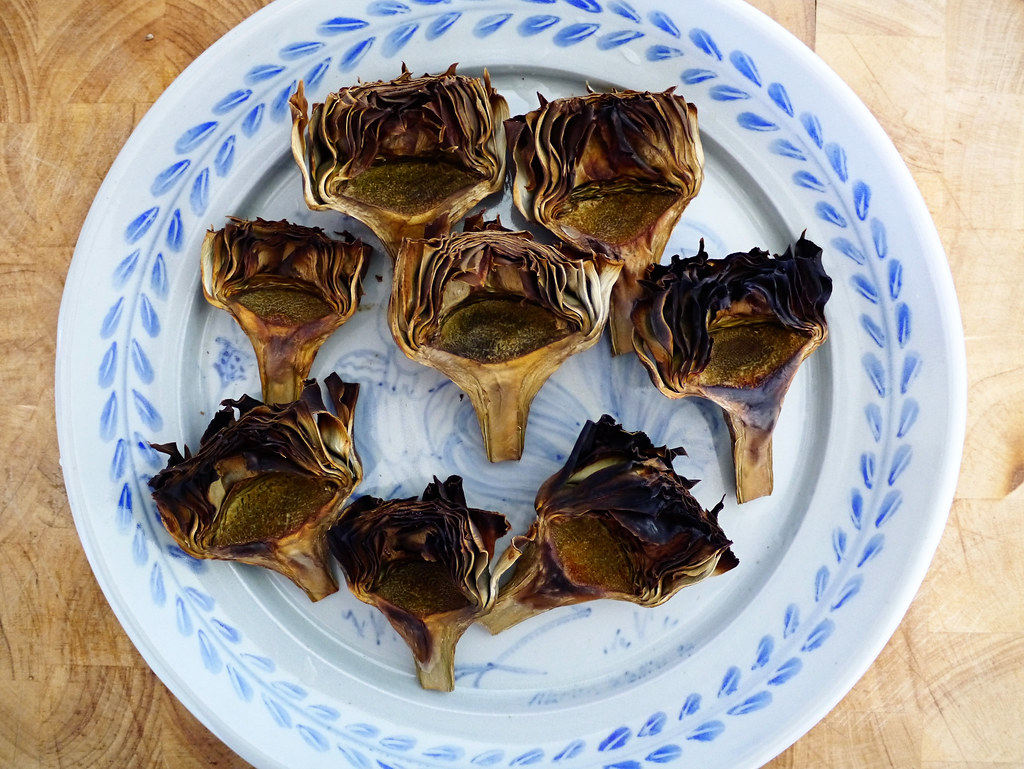
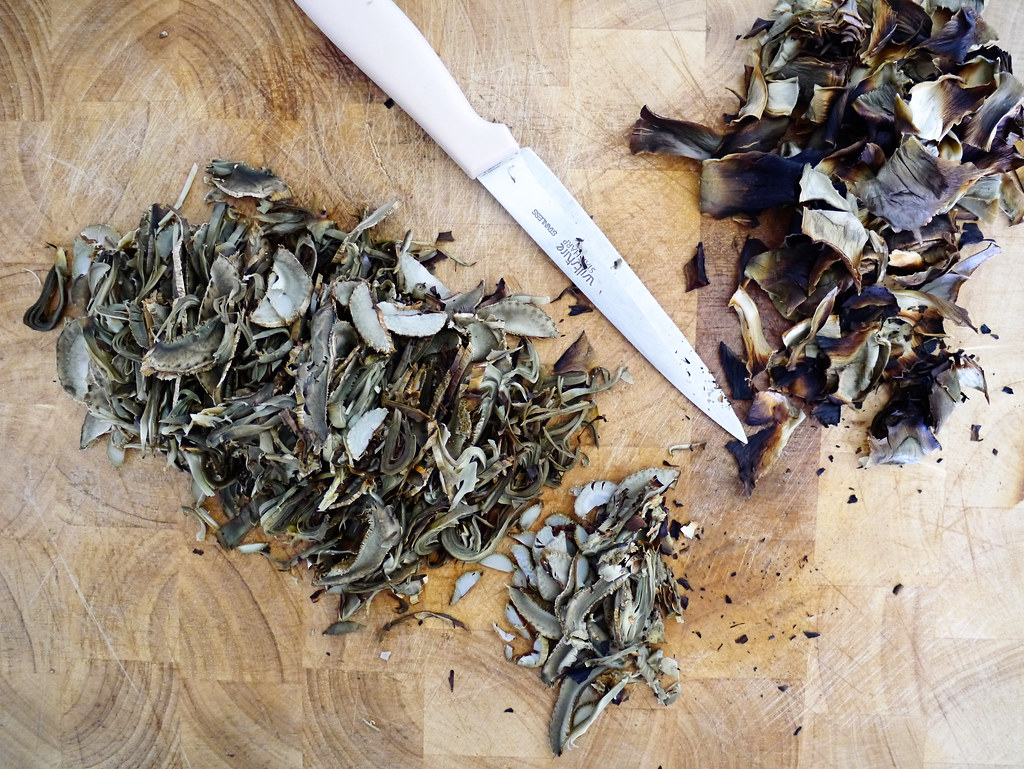
Discard the tough outer bracts of the artichokes.
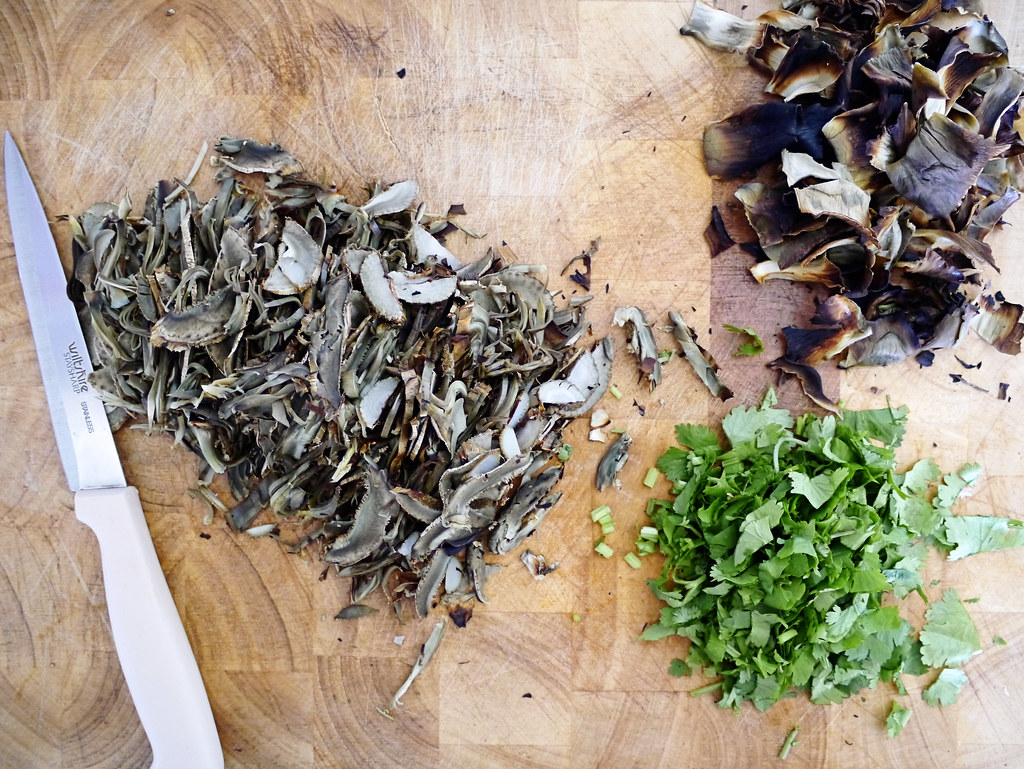
Roughly chop the coriander leaves.

In a large/Lao mortar, add the thinly sliced spring onions, Asian/French shallots, garlic cloves, chilies and coriander root. Pound well together to a semi-fine consistency.
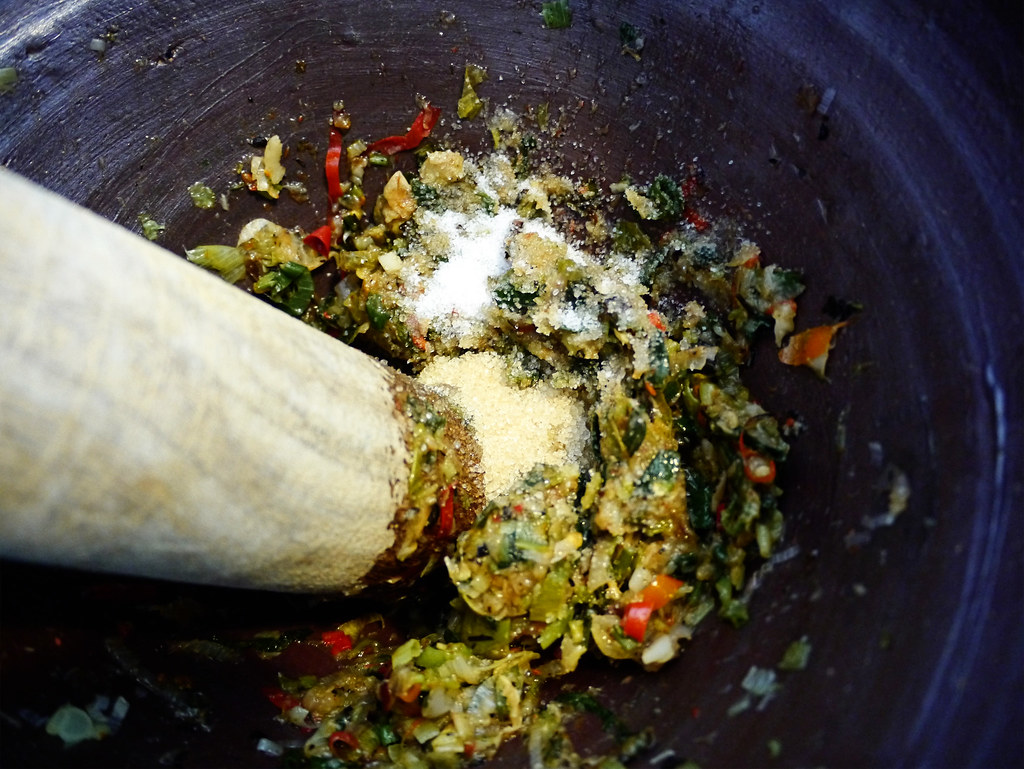
Add the sugar and salt and continue to pound/mix together.
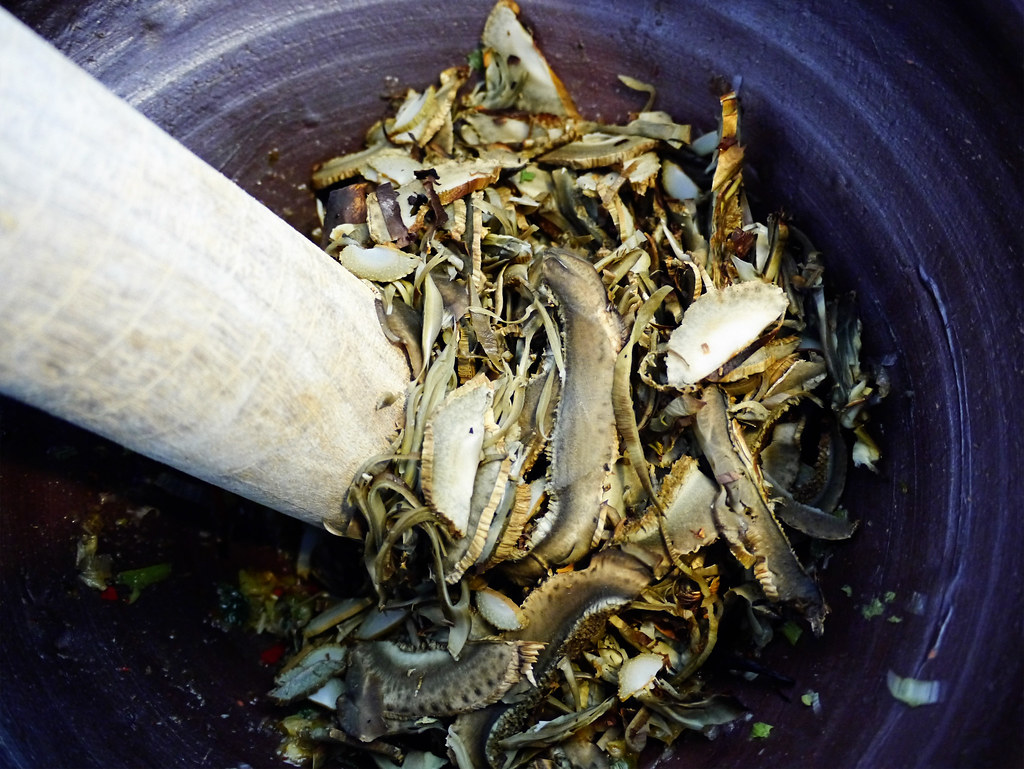
Add the sliced artichoke hearts/stems and continue to gently pound/mix together, using a spoon to help turn/mix the ingredients.
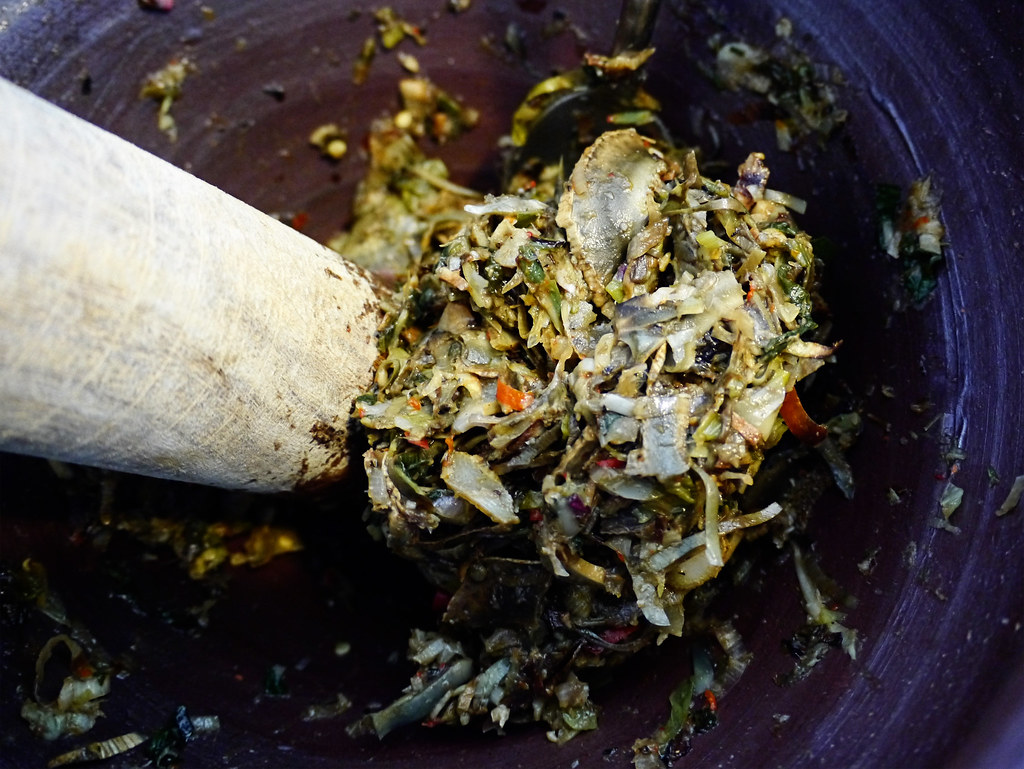
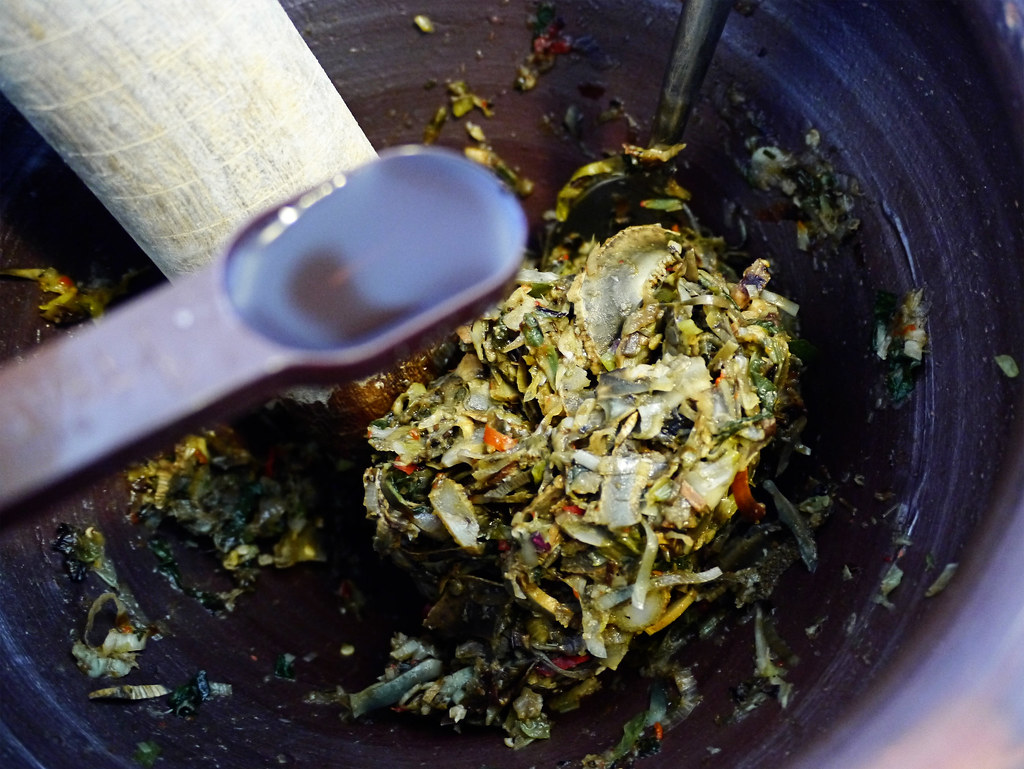
Add the fish sauce, padaek/fermented fish sauce and lemon juice (1 TBSP), and continue to gently pound/mix together with the pestle and spoon.
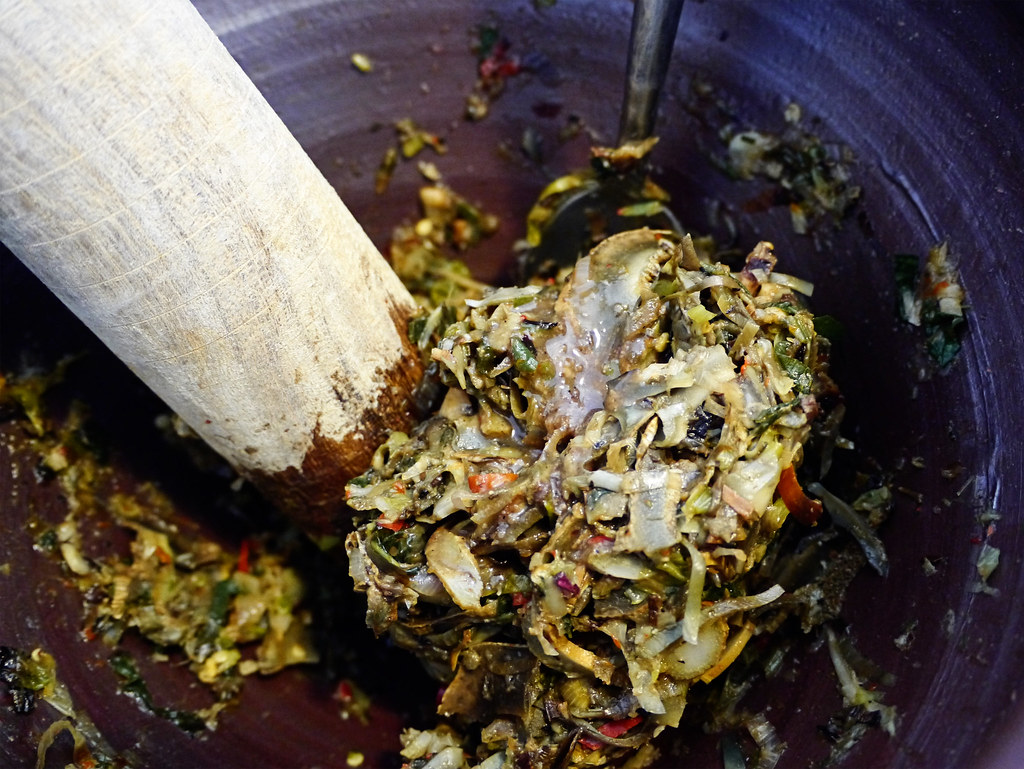
Taste and adjust to suit your palate. What you’re aiming for is a delicious/moreish blend/balance of salty, savoury, spicy and sour, with a hint of sweet.
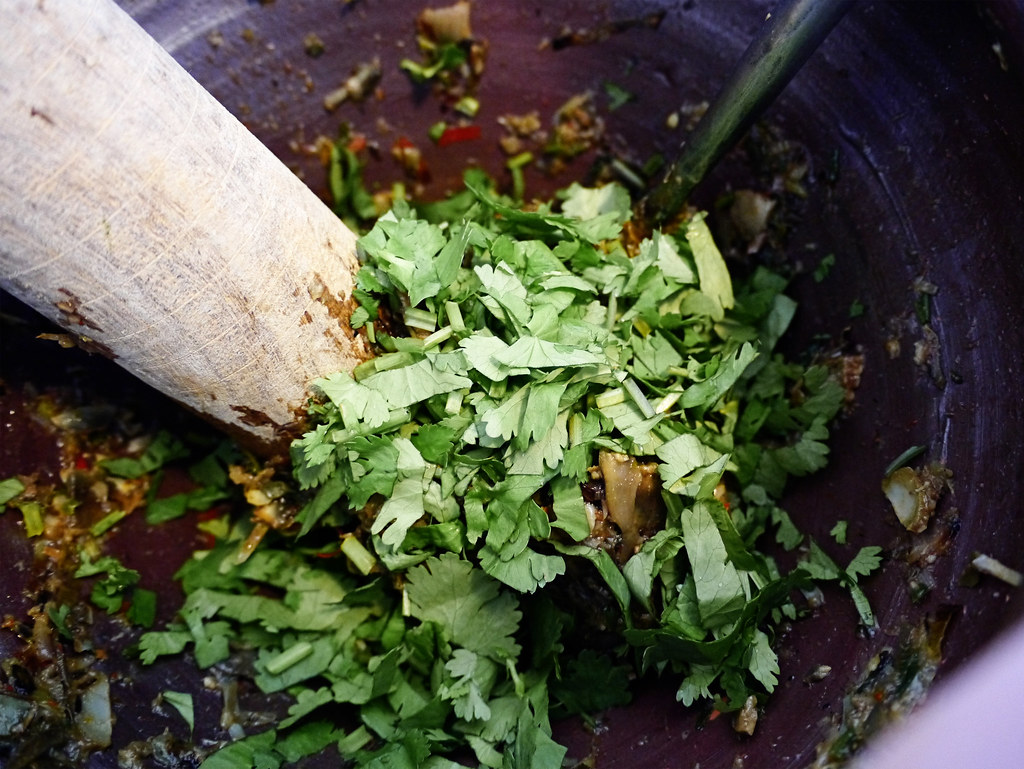
Add the chopped coriander leaves and gently mix/stir in with a spoon.
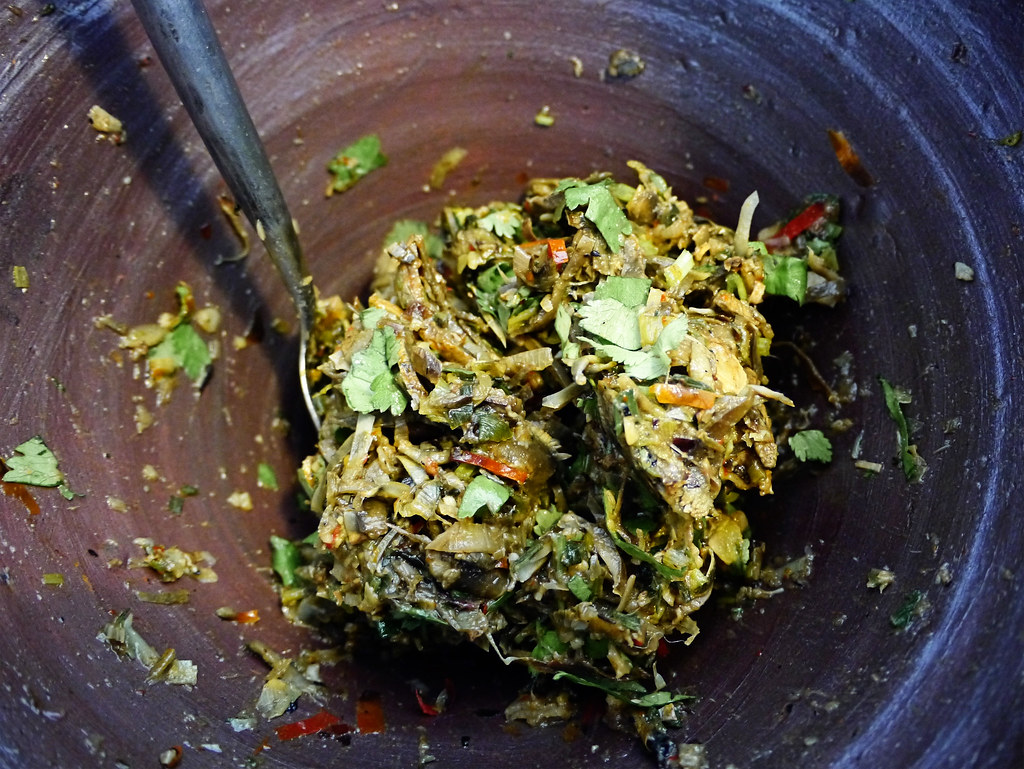
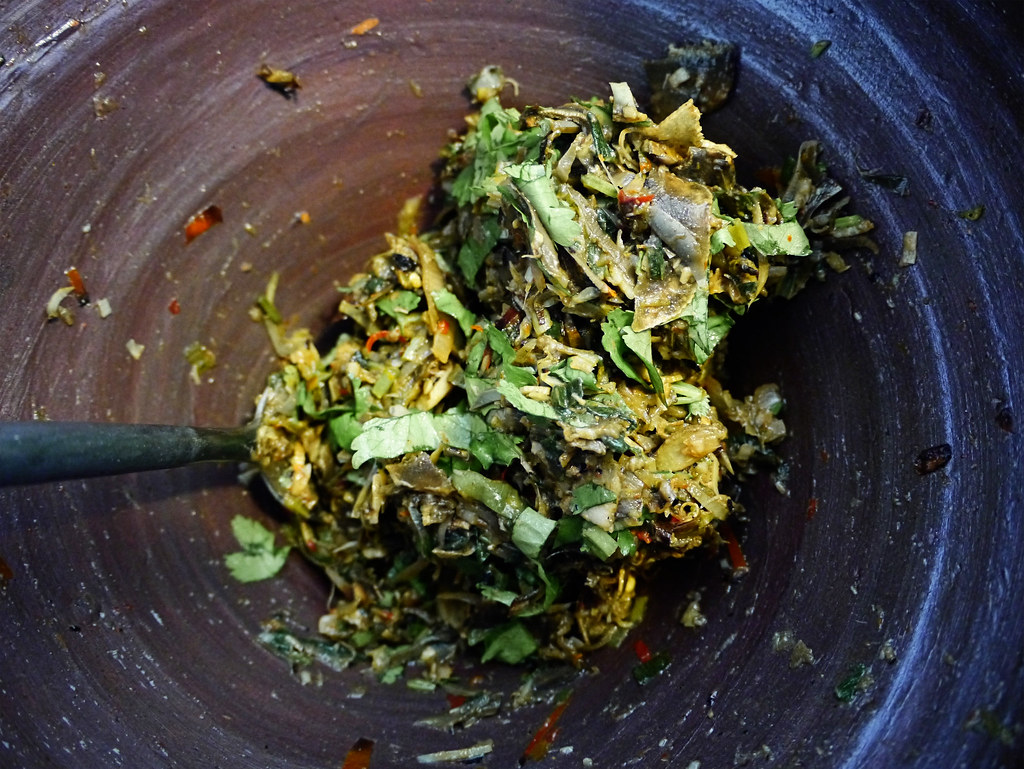
Voila!! Your jeow artichoke is now ready to be served and eaten.

Transfer it to a serving bowl and garnish with coriander leaves. Serve with sticky rice and enjoy the jeow with grilled/cooked meat, beef jerky, steamed veg, etc. bigsmile Sern saab!!
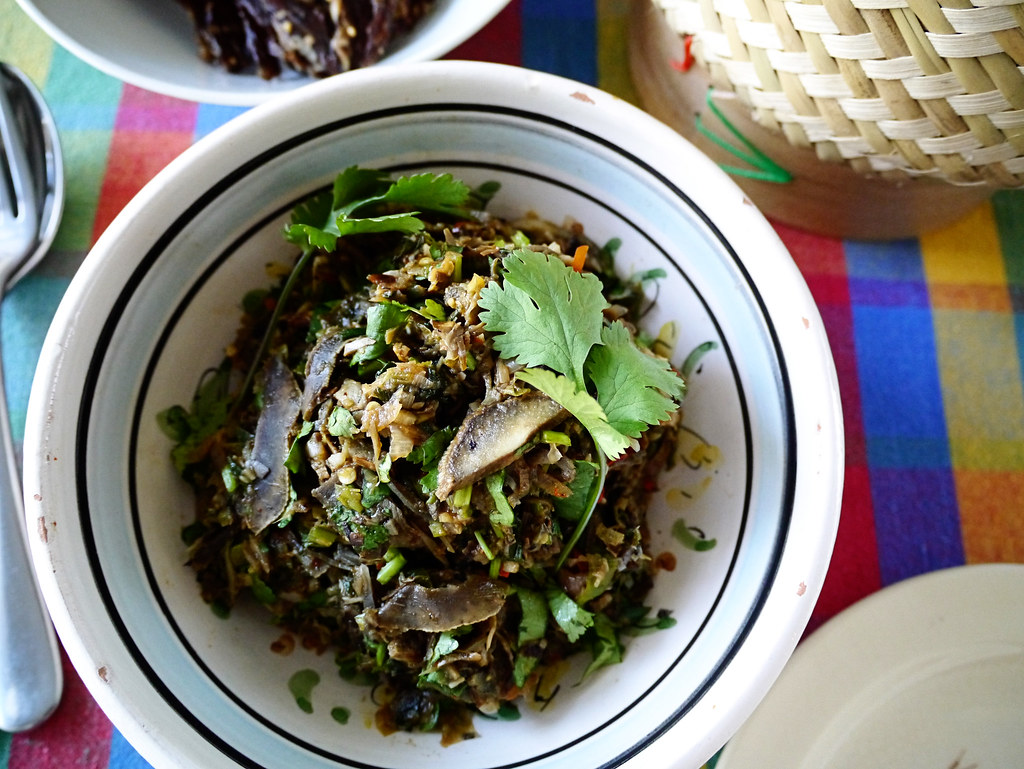
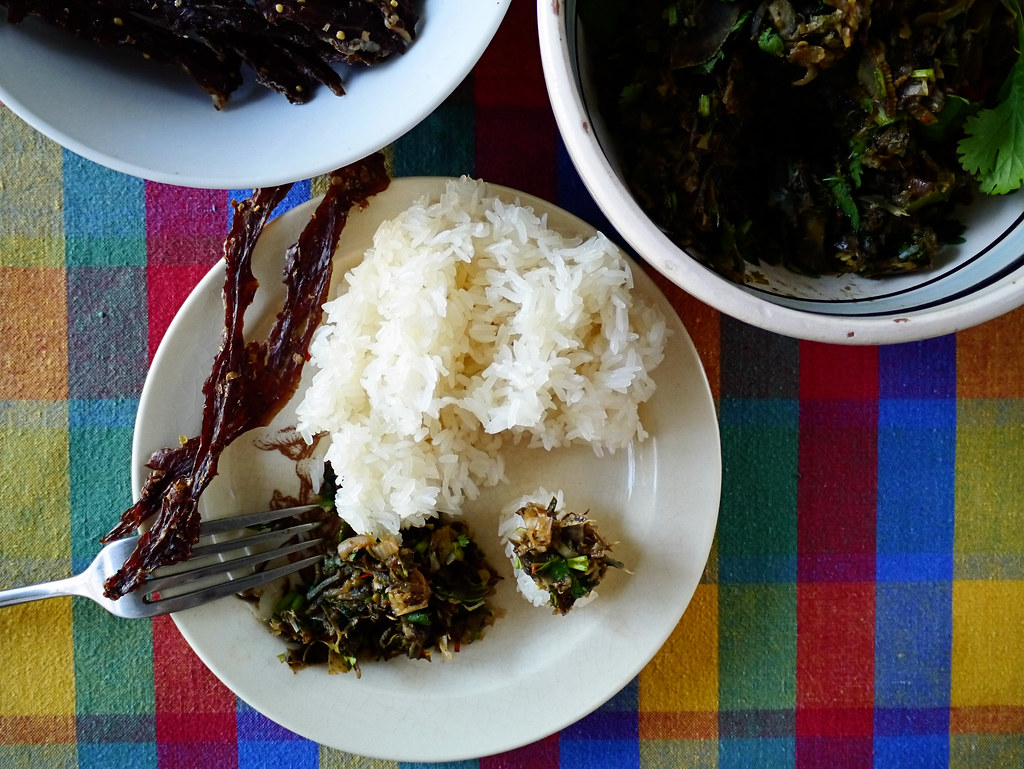

- 4 artichokes
- 3 spring onions
- 2 Asian/French shallots
- 4 garlic cloves
- 6 red hot chilies (bird's eye or bullet chilies work well, use as many as you like)
- 2 coriander
- 2 lemons
- 1 TBSP of fish sauce
- 2 tsp of padaek/fermented fish sauce
- ½ tsp of raw sugar
- ½ tsp of sea salt
- 1 TBSP of lemon juice
- First, prepare the artichokes. Cut the stem off the artichoke head so that you are left with about 5-10 cm of the stem still attached to the head. Rub the base of the stem with a lemon half to prevent it from turning brown. Pull/peel off the leaves from the stem and the dark green outer bracts from the head until you reach the light green/light yellow bracts which are also more tender. With a sharp knife, carefully cut off about ⅓ of the tip of the artichoke head. Be careful because the outer leaves can be tough and slippery! Rub the top of the cut head with the lemon half to prevent browning. Carefully cut the artichoke in half vertically. Again, rub the cut/exposed part with the lemon half to prevent browning. With a spoon, carefully scoop out the fuzzy/hairy choke from the center of the artichoke. Peel the outer skin off the stem and base of the artichoke head. Place the prepared artichoke halves in a bowl of cold water with juice from half a lemon while you prepare the remaining artichokes.
- Grill the spring onions (cut off roots and then cut into thirds), Asian/French shallots (halved), garlic cloves, chilies, coriander roots (reserve the leaves) and artichoke halves until they're soft and slightly charred. Thinly slice them. Discard the tough outer bracts of the artichokes. Roughly chop the coriander leaves.
- In a large/Lao mortar, add the thinly sliced spring onions, Asian/French shallots, garlic cloves, chilies and coriander root. Pound well together to a semi-fine consistency.
- Add the sugar and salt and continue to pound/mix together.
- Add the sliced artichoke hearts/stems and continue to gently pound/mix together, using a spoon to help turn/mix the ingredients.
- Add the fish sauce, padaek/fermented fish sauce and lemon juice (1 TBSP), and continue to gently pound/mix together with the pestle and spoon. Taste and adjust to suit your palate. What you're aiming for is a delicious/moreish blend/balance of salty, savoury, spicy and sour, with a hint of sweet.
- Add the chopped coriander leaves and gently mix/stir in with a spoon. Voila!! Your jeow artichoke is now ready to be served and eaten. Transfer it to a serving bowl and garnish with coriander leaves. Serve with sticky rice and enjoy the jeow with grilled/cooked meat, beef jerky, steamed veg, etc.bigsmile Sern saab!!
[[1]]Image Source: Wiki Commons. Date: Photographed in February 2010. Source: Originally uploaded at http://www.britainloveswikipedia.org/. Author: Valerie McGlinchey. Licensing: Creative Commons Attribution-Share Alike 2.0 UK: England & Wales license.[[1]]
[[2]]Image Source: Wiki Commons. Description: Português: Cardo (Cynara cardunculus) no Parque Natural do Sudoeste Alentejano e Costa Vicentina. Date: July 2006. Author: Lusitana. Permission: Creative Commons Attribution-Share Alike 3.0 Unported license.[[2]]
[[3]]Reference: Wikipedia.[[3]]
[[4]]The combination of sweet scented steaming hot sticky rice with delicious/aromatic/pungent jeow is without a doubt one of my favourite Lao comfort foods! mrgreen Oh blissful days!![[4]]